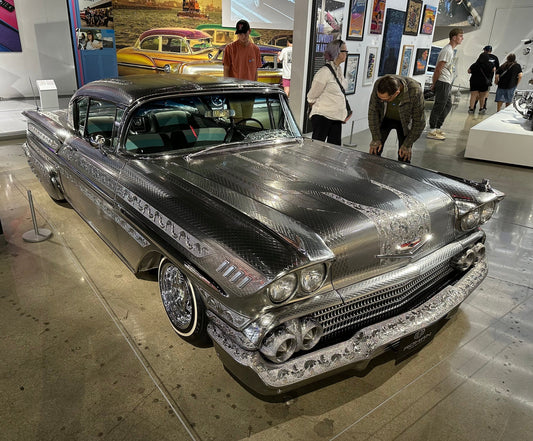I don't believe I was breathing at the moment I flipped the switch to power up my friend's $50K stereo system. No, I am pretty certain I was holding my breath at the moment my cobbled together power amplifier, fed at its input by a vintage HP signal generator, came to life.
It worked. Dang! No telltale whifs of blue smoke, just everything in his system powered on and happy.
That's the first good news that slowed my heart beat to something less than a speeding locomotive. The next step would either slow it to a normal rhythm or stop it all together.
How would it sound?
Well, probably not a spoiler alert to suggest it sounded beyond our wildest expectations. We had our collective fingers crossed to hear an overall improvement but we certainly weren't expecting the magnitude of change we were hearing. In fact, so big was the improvement that we turned the system off, plugged everything back into the wall socket and tried again.
Sanity check.
Plugged back into the wall sockets the experience we were used to instantly returned.
With the new power generating station feeding Peter's system we had both exclaimed it sounded like someone pulled a blanket off the speakers. Plugged back into the wall socket the now muddled and thick sound was back. Gone was the enormous front to back depth from the regenerator that had seemed to extend outside the windows of his home. Gone too was the extraordinary new-found space between instruments and vocalists. In its place, the performers now felt scrunched and crowded.
We reconnected the regenerator and bingo! Back again. Wow!
The HP sine wave generator connected to the power amplifier's input had on its face a huge dial that determined the frequency of the sine wave. Because our homes in the United States run on 60Hz, while homes in Europe and much of Asia run at 50Hz, I figured it would be fun to see what differences we might hear when I changed the frequency. Easy to do. Just turn the big dial and voila! New frequency.
Interestingly, moving the dial from 60Hz to 50Hz had a noticeable sonic difference: bass was strengthened but the higher frequencies thickened. Ok, weird enough but confirmed. Changing the frequency of the sine wave powering our equipment changed the way it sounded. As Mr. Spock was fond of saying, "fascinating".
Peter, ever the tinkerer asked, "what happens if we go the other way?"
Great question, easy to try. With every increase in frequency the top end and midrange opened up while the bass frequencies thinned out. On that day, we took the frequency to as high as 400Hz and were just stunned at the difference in sound quality.*
"This revelation about frequency affecting sound quality would lead us to invent yet another innovation, one our good friend and Northrop Grumman engineer Doug Goldberg would spearhead called MultiWave that is still in Power Plants of today.
It worked. It worked so well that then and there I decided this would become the fundamental foundation of the new PS Audio. The first product would launch the next year, 1998, with the world's first high-end audio regenerator featuring fully adjustable frequency and voltage. It was called the P300 and was capable of producing up to 300 watts of pure, low impedance, AC power. This device was limited to 120 volts output (for reasons now clear to you). To produce 230 volts, export models had an added step up power transformer at their output. We sold thousands of these units and today, most are still in use, helping stereo systems around the world perform at their best.*
*Unbeknownst to us at the time, Japanese manufacturer Accuphase had been working on the same idea and launched a 500 watt version of the AC regenerator though it did not have adjustable anything. Still, a fine unit.
From that glorious moment at Peter's home we built a company that today, 50 years after its inception, remains based on our original dream of building performance based high value products, starting from the AC wall socket and covering everything in between all the way to your ears.
The Power Plants were the start of it all and, still to this day, remain the core of any great system because the AC power problems in our homes, the ones that will never be solved by passive power conditioners or any technology that does not measurably address the real problems of the power feeding our equipment, remain.
Hope you enjoyed this look into our history.










